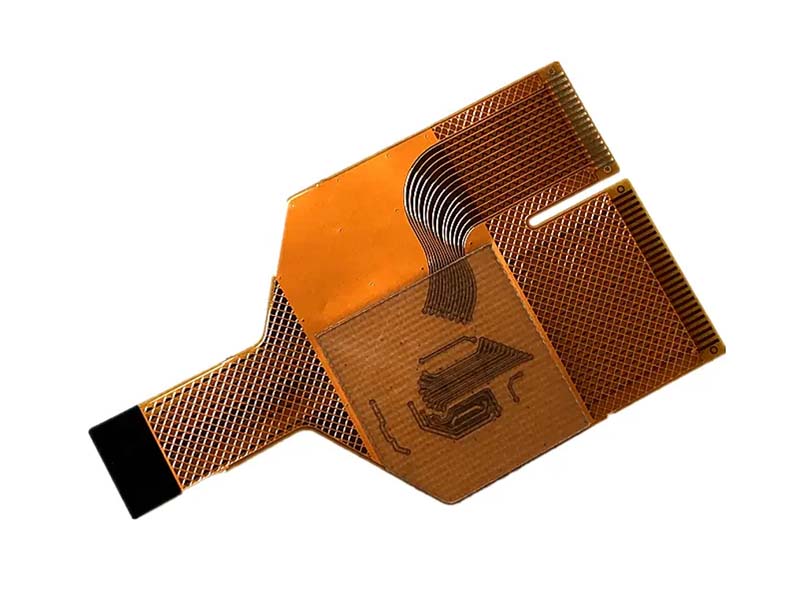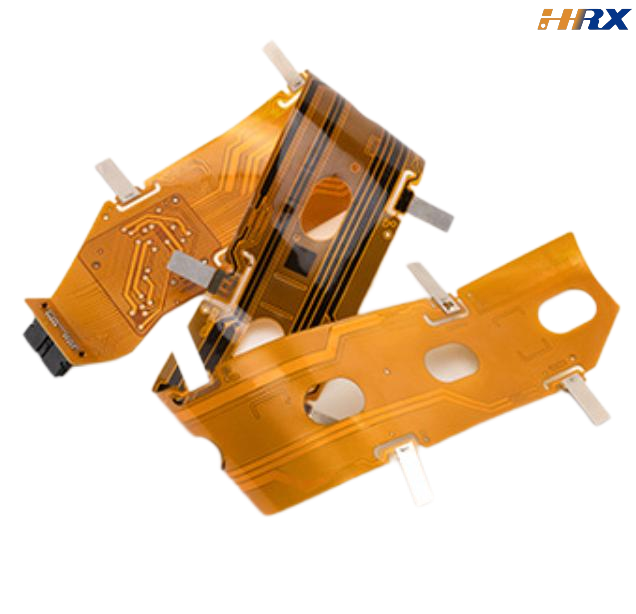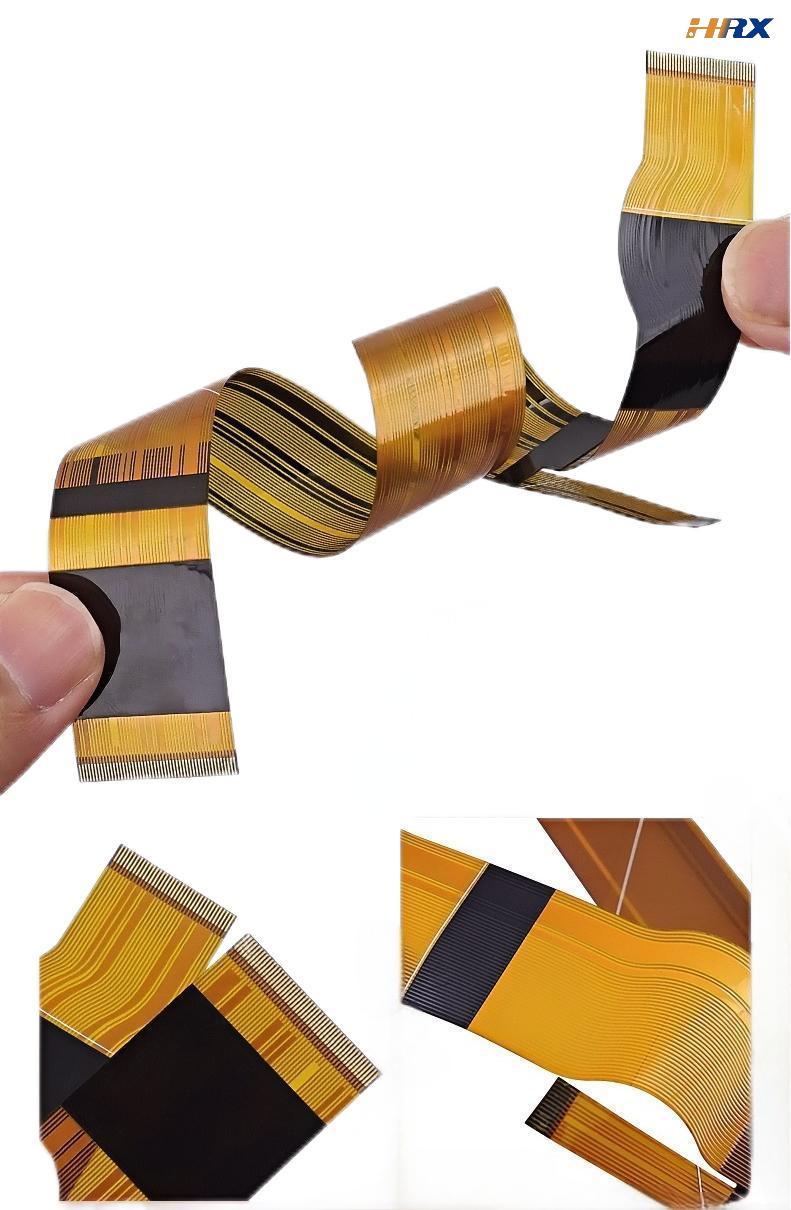Search
Unlocking Advanced Electronic Interconnection Technologies: The Synergy of Anisotropic Conductive Film (ACF) and Flexible Printed Circuit (FPC)
- Apr 23,2025
-
Share
In the rapidly evolving domain of microelectronics and high - density interconnect (HDI) technologies, the integration of Anisotropic Conductive Film (ACF) and Flexible Printed Circuit (FPC) has emerged as a transformative solution for modern electronic devices. As Shenzhen Huaruixin Electronics Co., Ltd., a leading ISO - certified manufacturer specializing in FPC, PCB, and Rigid - Flex Printed Board fabrication, we possess profound expertise in harnessing the potential of this cutting - edge combination. This blog delves into the synergistic applications of ACF and FPC, the latest advancements in ACF thermal compression bonding technology, its deployment in end - products, and the critical factors influencing the interfacial adhesion between ACF and FPC. Leveraging industry - specific jargon and SEO - optimized keywords, we aim to provide a comprehensive and authoritative resource for professionals and enthusiasts in the electronics manufacturing sector.

The Synergistic Interface of ACF and FPC
ACF: Structural Composition and Conductive Mechanism
Anisotropic Conductive Film (ACF) is a key enabler for fine - pitch and high - reliability interconnections in microelectronics. Structurally, ACF comprises a thermosetting or thermoplastic polymer matrix, uniformly dispersed conductive particles (usually nickel - gold or silver - coated polymer spheres), and functional additives. The polymer matrix acts as a carrier, providing mechanical integrity, adhesive properties, and insulation in the x - y plane.
During the thermal compression bonding process, the polymer matrix undergoes a phase transition upon heating, reaching its glass transition temperature (Tg) or melting point (Tm). Simultaneously, the applied pressure causes the conductive particles to deform and establish electrical contact in the z - axis direction, creating a conductive pathway between the FPC's copper pads and the mating components, such as Integrated Circuits (ICs) or Liquid Crystal Displays (LCDs). The unique anisotropic conductivity of ACF, with low resistance in the z - axis and high insulation in the x - y axes, ensures precise electrical interconnection while preventing short - circuits.
FPC: The Ideal Substrate for Advanced Interconnections
Flexible Printed Circuits (FPCs) have become the substrate of choice for ACF - based interconnections due to their exceptional flexibility, thin profile, and high wiring density capabilities. FPCs fabricated from high - performance polyimide (PI) or polyester (PET) substrates can achieve bend radii as low as 0.1 mm, enabling complex 3D routing and form - factor designs. The surface finish of FPCs, particularly those with electroless nickel immersion gold (ENIG) or organic solderability preservative (OSP) coatings, provides an optimal interface for ACF adhesion and electrical contact.
The combination of FPC and ACF enables the creation of flexible interconnection systems that comply with IPC - 6013 Class 3 standards for high - reliability applications. This synergy is particularly crucial in applications requiring high - speed data transfer, such as HDMI, USB 3.0, and PCIe interfaces, where signal integrity and mechanical durability are paramount.
Advancements in ACF Thermal Compression Bonding Technology
The evolution of ACF thermal compression bonding technology has been driven by the increasing demand for miniaturization, higher reliability, and lower cost in electronics manufacturing. Modern bonding equipment, such as pulse - heat bonders and hot - bar bonders, are equipped with advanced closed - loop control systems that can precisely regulate temperature, pressure, and dwell time within ±1°C, ±1 N, and ±0.1 s tolerances, respectively.
In - line inspection technologies, including high - resolution digital microscopes and X - ray inspection systems, are now commonly used to monitor the bonding process in real - time. These systems can detect defects such as voids, non - wetting, and misalignment, enabling immediate corrective actions to ensure first - pass yield rates of over 99%.
At Shenzhen Huaruixin Electronics Co., Ltd., we have invested in state - of - the - art ACF bonding equipment featuring multi - zone temperature control and ultrasonic vibration capabilities. Our R & D team continuously explores innovative bonding techniques, such as vacuum - assisted bonding and multi - step curing processes, to optimize the performance of ACF - FPC assemblies for emerging applications in the Internet of Things (IoT), 5G communication, and wearable electronics.
Applications in High - Tech End - Products
The ACF - FPC combination has found extensive applications in a wide range of high - tech end - products:
Consumer Electronics: In smartphones and tablets, ACF - bonded FPCs are used for display - to - motherboard connections, touch - screen interfaces, and camera module interconnections. The flexibility of FPCs enables slim form factors, while the reliability of ACF ensures stable signal transmission even under repeated bending and flexing.
Wearable Devices: Smartwatches, fitness trackers, and AR/VR headsets rely on ACF - FPC assemblies for their compact and flexible designs. The ability to integrate multiple sensors, batteries, and wireless modules into a single, bendable circuit board is a key advantage of this technology.
Automotive Electronics: In - vehicle infotainment systems, advanced driver - assistance systems (ADAS), and electric vehicle (EV) battery management systems utilize ACF - FPC interconnections for their high - reliability and resistance to vibration, temperature fluctuations, and electromagnetic interference (EMI).
Critical Factors Affecting ACF - FPC Adhesion
Contact Copper Residual Rate
The contact copper residual rate on FPC pads is a critical KPI (Key Performance Indicator) in ACF bonding. A minimum residual rate of 85% is recommended to ensure sufficient electrical contact area and mechanical adhesion. At Shenzhen Huaruixin Electronics Co., Ltd., we employ advanced laser direct imaging (LDI) and electroplating processes to achieve high - precision copper patterns with consistent residual rates, meeting the stringent requirements of ACF bonding.
Copper Thickness
The thickness of the copper layer on FPCs typically ranges from 18 μm to 70 μm, depending on the application requirements. Thinner copper layers (e.g., 18 μm) are preferred for high - density interconnects due to their lower profile and better flexibility, while thicker layers (e.g., 70 μm) are suitable for high - current applications. Our engineering team conducts in - depth FEA (Finite Element Analysis) simulations to optimize copper thickness for each project, balancing electrical conductivity, mechanical strength, and ACF adhesion.
Thermal Compression Parameters
Temperature Profile: The peak bonding temperature for ACF typically ranges from 150°C to 200°C, depending on the type of polymer matrix. A well - designed temperature profile, including pre - heating, soak, and reflow phases, is essential for complete polymerization and optimal adhesion.
Pressure Distribution: Uniform pressure distribution across the bonding area is critical to ensure consistent contact between the ACF and FPC. Our bonding equipment features advanced pressure - sensing technologies that can detect and correct pressure variations in real - time.
Dwell Time: The dwell time, usually between 5 s and 30 s, determines the degree of polymerization and the formation of stable electrical connections. Our process engineers use Design of Experiments (DOE) methodologies to optimize these parameters for each ACF and FPC combination.
FPC Processing Technology
Surface Treatment: Plasma treatment and chemical roughening are commonly used to enhance the surface energy of FPCs, improving ACF adhesion. Our FPC manufacturing facilities are equipped with plasma - enhanced chemical vapor deposition (PECVD) systems for precise surface modification.
Cleaning Processes: Ultrasonic cleaning and UV - ozone treatment are employed to remove contaminants such as oxides, residues, and organic impurities from FPC surfaces. Stringent in - process cleaning is essential to achieve a surface cleanliness level of less than 10 μg/cm², as required for high - reliability ACF bonding.
Copper Foil Roughness
The surface roughness of copper foils, measured by the Ra (arithmetic average roughness) parameter, significantly affects ACF adhesion. An optimal Ra value between 0.5 μm and 1.5 μm provides a balance between mechanical interlocking and uniform pressure distribution. Our quality control department uses atomic force microscopy (AFM) to precisely measure and control copper foil roughness during the FPC manufacturing process.

The integration of Anisotropic Conductive Film (ACF) and Flexible Printed Circuit (FPC) represents a paradigm shift in electronic interconnection technology, enabling the development of next - generation smart devices. As Shenzhen Huaruixin Electronics Co., Ltd., we are dedicated to delivering high - quality, customized solutions that leverage the latest advancements in ACF - FPC technology. Whether you require high - reliability FPCs for automotive applications, flexible interconnections for wearable devices, or advanced PCB solutions for industrial electronics, our team of experts is ready to assist you.
Visit our website at www.hrxfpc.com to explore our comprehensive product portfolio and capabilities. For project inquiries or technical consultations, please contact us at sales@hrxfpc.com. We also invite industry professionals to join our community for knowledge sharing and collaborative innovation. Together, let's shape the future of electronic interconnection technologies.

Let’s talk! We’ll provide the perfect solution for you!
-
 Huaruixin Electronics mainly produces printed circuit boards as the core business, to provide customers with one-stop solutions for FPC/PCB production, components sourcing and Assembly.
Huaruixin Electronics mainly produces printed circuit boards as the core business, to provide customers with one-stop solutions for FPC/PCB production, components sourcing and Assembly. - WHAT WE DO — PCB Design Solutions — Flex PCB Production — Components Sourcing — FPC&PCB Assembly
- PRODUCTS — Single Sided Flexible Circuits — Double Sided Flexible Circuits — Multilayer Flexible Cirucits — Rigid-Flex Circuits — FPC Assembly — PCB Assembly
- CAPABILITY — FPC Capability — Rigid-Flex Capability — PCB Capability — Assembly Capability
- Copyright © 2024 Shenzhen Huaruixin Electronics Co., Ltd. All Rights Reserved.
- Design By BONTOP


